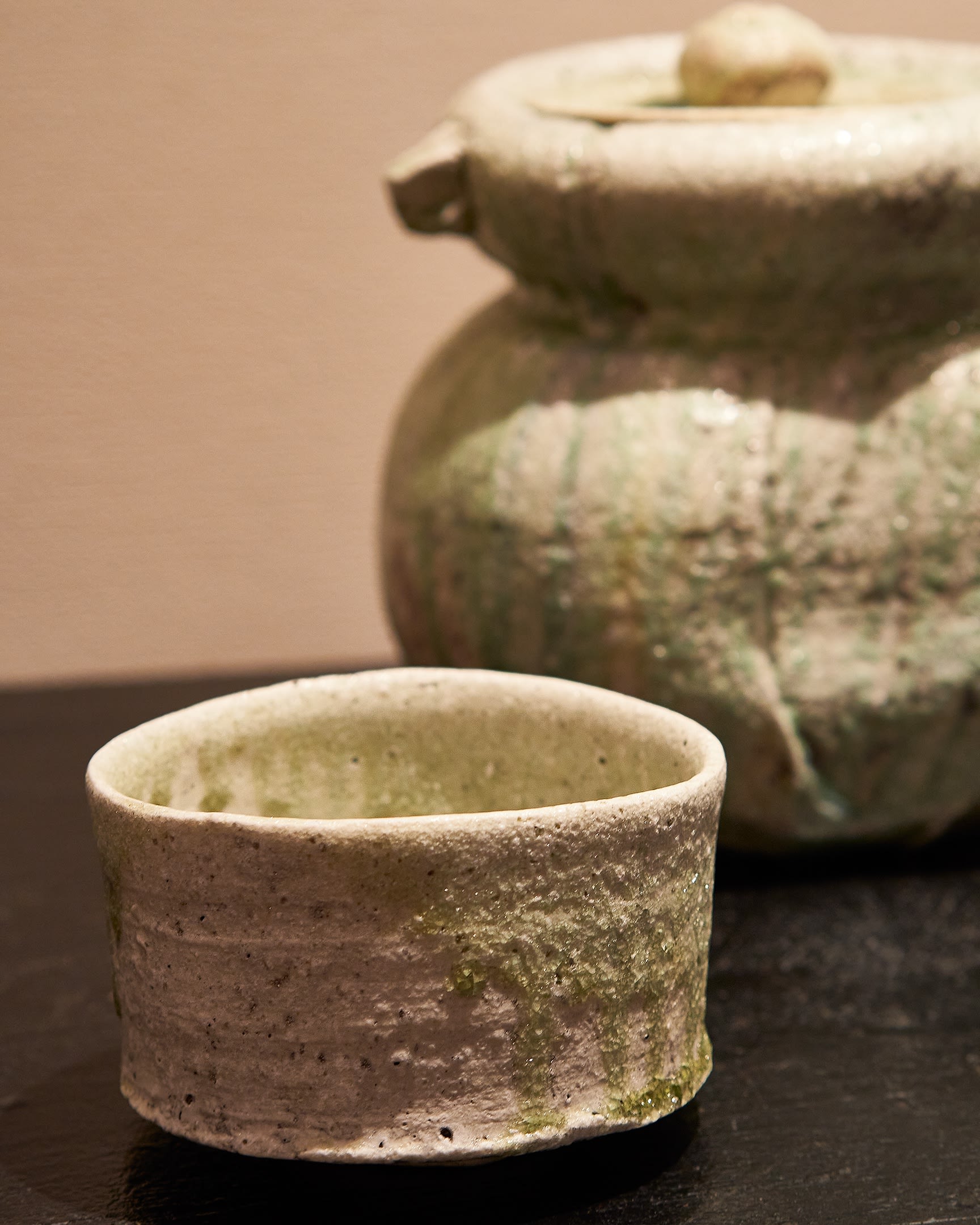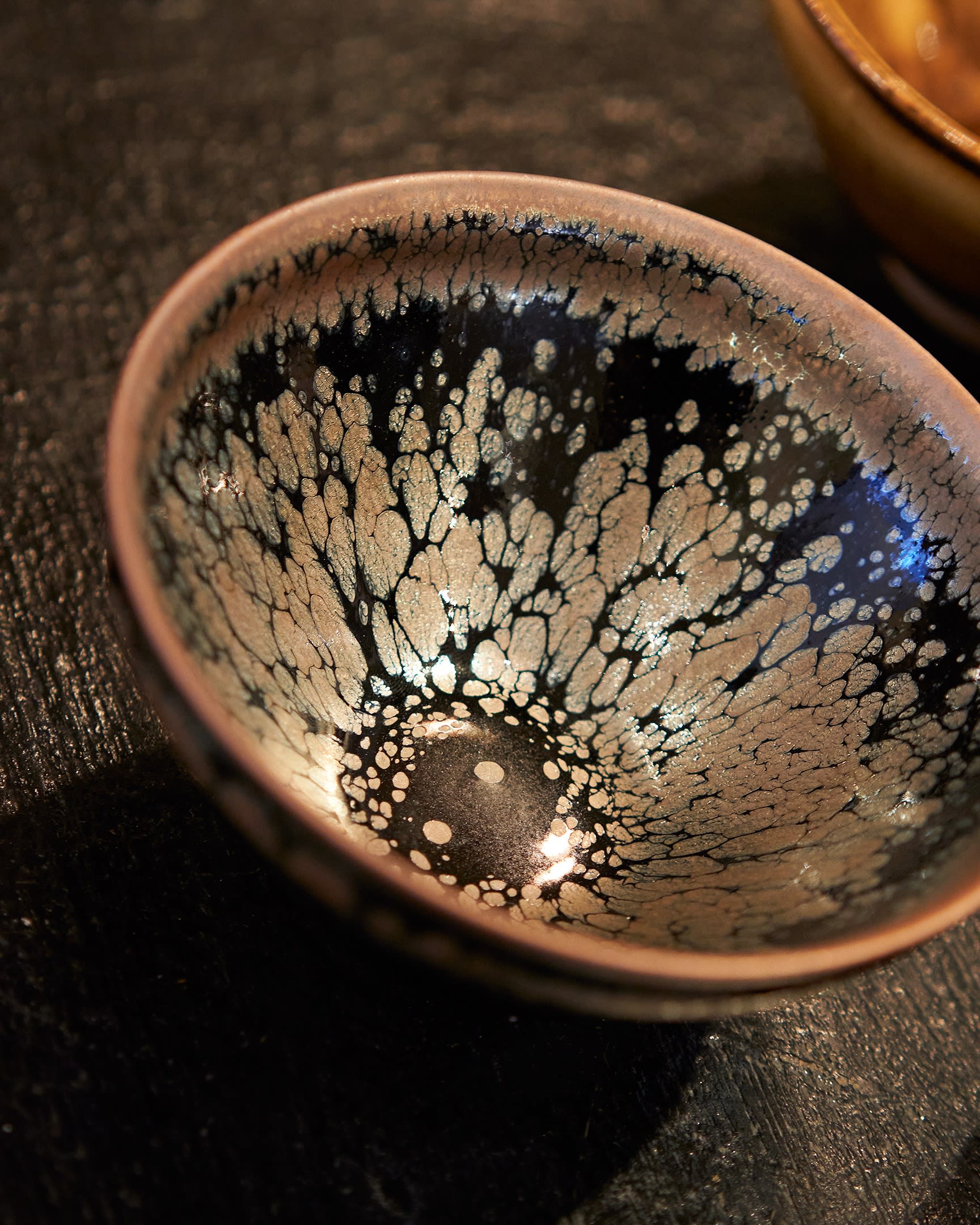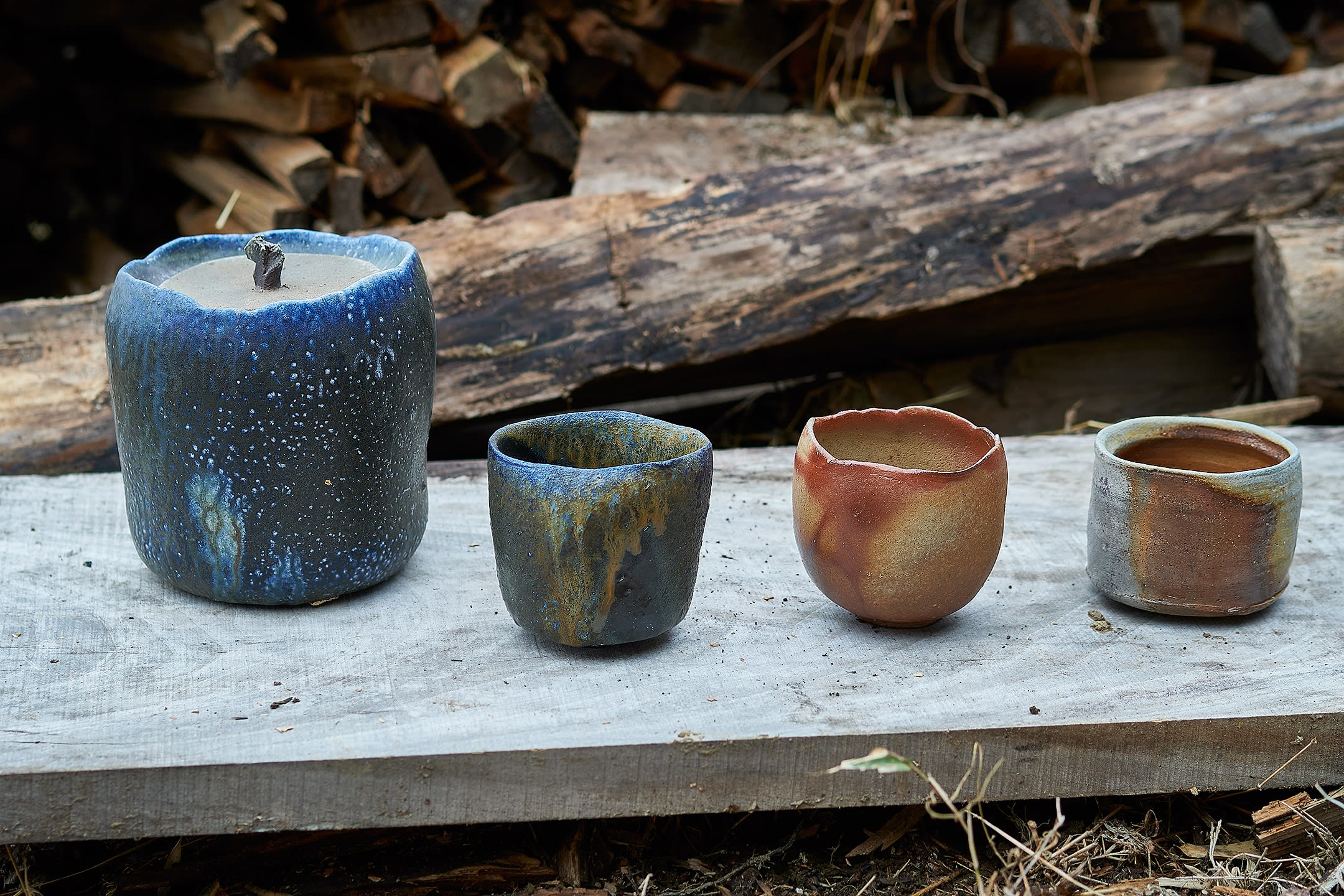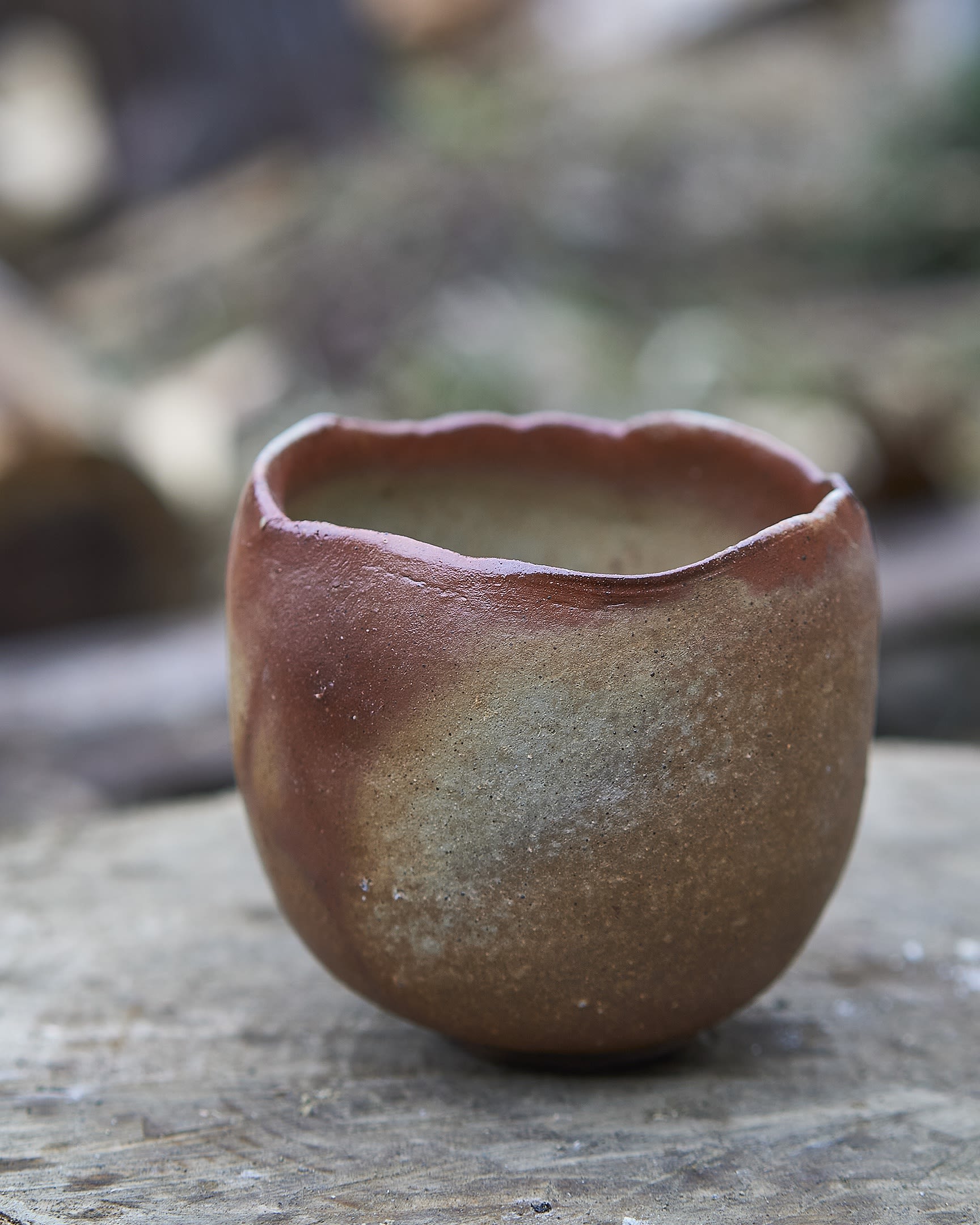
Today, the world is being rocked by confusion and unease. Human life is threatened by a virus and the balance of nature is being destroyed. Humankind’s true essence lies in the interaction with others, but this has become limited- people have lost their freedom to travel and limits have been placed in contact with others, including family, and society is forced to wonder how they can preserve humanity.
Today, even though the tea ceremony has been faced with calls for change, Ippodo Gallery continues to introduce contemporary tea ware. In New York, the demand for tea bowls is increasing and those who enjoy tea seem able to be establishing relationships through the use of tea bowls in place of personal connection.

The tea bowl represents a rare art form since it is not only by the hands, but also by the lips. It possesses a physicality that allows it to be experienced through the five senses. Whether or not it is used to make tea, when it is cradled in the hands it can be appreciated through three hundred and sixty degrees, creating a spiritual link. Furthermore, tea bowls display a ‘cosmic view,’ hinting at time and space, that imbues them with an unrivaled attraction as vessels that appeal to the hearts of people today.

In Japan, people still adhere to the various traditional seasonal rites and customs that have been preserved in our daily lives. For instance, during the winter solstice people eat pumpkins and place small citrus fruits, called yuzu, in their baths to ward off ill-health; during tanabata, the star festival, people write wishes on strips of colorful paper they then tie onto bamboo branches, sending their thoughts up into the night skies. Naturally, a sense of the seasons is also incorporated in Japanese arts and crafts. People who enjoy works of this kind like to feel the various seasons slightly in advance. In the tea ceremony, seasonal flowers are arranged in an alcove with a hanging picture scroll, the utensils, even the cakes, are suggestive of the season. However, of all the items used in the ceremony, the tea bowl plays the most important role in the appreciation of the seasons. This is not confined to the application of bright patterns, its appearance may conjure images from literature or poetry, while the shape, color of the glaze or the texture all contribute to create an image of the season. For instance, a red clay speaks of a warm fire, white glaze a snowscape, pink a spring or brown glaze a premonition of autumn. When a guest receives a message from the tea bowl in this way, they do not have to put their feelings into words but are able to enjoy a moment of spiritual communication. This seasonal element represents a form of thanks or a prayer to ; furthermore, the joy of a ‘never-to-be-repeated meeting,’ the enjoyment and sadness of a fleeting moment, is something that the Japanese people hold particularly dear.

One of my clients is a collector who specializes in acquiring tea bowls by a particular potter. The two have never met, yet they are able to create a bond through tea bowls. The collector feeling the potter’s warmth and ideology in the presence of the tea bowl itself. Tea bowls therefore transform into language, a tool for communication.

Ippodo Gallery New York plans to hold a Magic Tea Bowl Exhibition in 2021 in which we will present a variety of magic tea bowls that people can pick up and become connected with, easing the worries of the day and providing them with the strength to face a new tomorrow.





